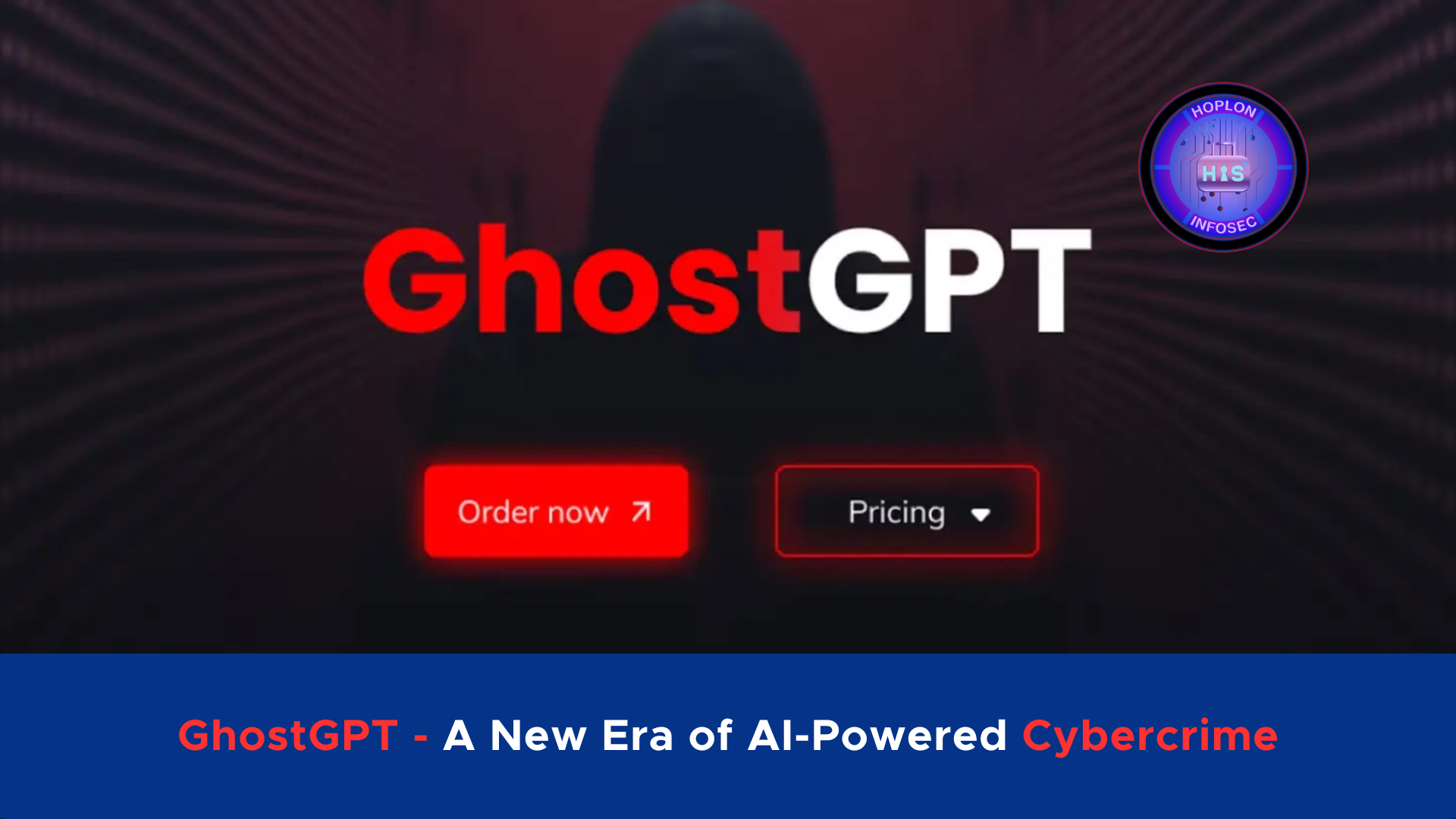The rapid development of generative AI has revolutionized industries, offering significant benefits in productivity and creativity. However, alongside these advancements, technology has also introduced unprecedented risks. Among the most alarming developments is GhostGPT, an uncensored AI chatbot designed explicitly for cybercriminal activities. Discovered by researchers at Abnormal Security, GhostGPT represents a dangerous shift in the use of AI, enabling malicious actors to carry out phishing schemes, create malware, and quickly develop exploits.
In this article, we will explore the features of GhostGPT, its implications for cybersecurity, and how organizations and individuals can protect themselves from this emerging threat.
What Is GhostGPT?
GhostGPT is an AI tool marketed explicitly for cybercriminal purposes. Unlike legitimate AI tools governed by ethical guidelines and safeguards, GhostGPT lacks restrictions and censorship, making it a potent weapon in the hands of bad actors. Its creation underscores the darker side of AI, where its capabilities are weaponized for illicit activities.
GhostGPT is not isolated; it joins a growing list of uncensored AI chatbots, such as WormGPT and FraudGPT. These tools empower cybercriminals with advanced functionalities while reducing the skill and effort required to execute sophisticated attacks.
Features of GhostGPT

GhostGPT boasts several features that make it an attractive tool for cybercriminals. These characteristics highlight its capability to lower the barrier of entry for malicious activities:
1. Rapid Processing
GhostGPT is designed to process and generate malicious content at an alarming speed. This feature allows attackers to craft phishing emails, malware scripts, and social engineering templates within seconds, enabling them to execute attacks with minimal delays.
2. No Logs Policy
The chatbot claims to operate without recording user activity, ensuring anonymity for its users. This “no logs” policy appeals to individuals seeking to avoid detection while conducting illicit activities.
3. Easy Access
Distributed via Telegram, GhostGPT is easily accessible to anyone, even those without technical expertise. Unlike traditional hacking tools that require specialized knowledge or software installations, GhostGPT simplifies the process, making it user-friendly for aspiring cyber criminals.
How GhostGPT Is Used in Cybercrime
GhostGPT has been marketed as a versatile tool for various malicious purposes. Its capabilities include:
1. Crafting Malware and Exploits
GhostGPT can generate code for malware and exploits, providing cybercriminals with the tools to infiltrate systems, steal data, or cause disruptions. The AI’s ability to produce complex scripts rapidly gives attackers an edge over traditional methods of malware development.
2. Writing Phishing Emails
One of GhostGPT’s key selling points is its ability to create convincing phishing emails. For instance, researchers prompted the chatbot to generate a phishing email mimicking DocuSign, and the results were alarmingly effective. The AI-generated template could easily deceive unsuspecting recipients, demonstrating its potential to facilitate Business Email Compromise (BEC) scams.
3. Automating Social Engineering Attacks
GhostGPT automates the creation of social engineering scripts, making it easier for attackers to manipulate victims. Whether impersonating a trusted entity or crafting personalized messages, the chatbot streamlines the process of exploiting human vulnerabilities.
Implications for Cybersecurity
The emergence of GhostGPT raises significant concerns for the cybersecurity community. Its capabilities directly threaten organizations, individuals, and the broader digital ecosystem.
1. Accessibility to Non-Technical Users
GhostGPT’s ease of use eliminates the need for technical expertise, enabling even low-skilled attackers to execute sophisticated campaigns. This democratization of cybercrime increases the volume and diversity of threats.
2. Accelerated Attack Timelines
With its rapid response times and uncensored outputs, GhostGPT allows attackers to plan and execute campaigns more efficiently. The time it takes to create phishing emails, malware, or exploits is drastically reduced, leaving defenders less time to respond.
3. Increased Scalability of Attacks
Generative AI tools like GhostGPT enable attackers to scale their operations. Cybercriminals can target a broader audience with minimal effort by automating repetitive tasks such as crafting multiple phishing emails or generating polymorphic malware (malware that evolves to evade detection).
4. Difficulty in Detection
Traditional security measures, such as firewalls and email filters, struggle to detect AI-generated content due to its human-like quality. The sophistication of these tools demands adopting AI-powered cybersecurity solutions to combat such threats effectively.
The Rise of Weaponized AI
GhostGPT is part of a broader trend where generative AI is weaponized for malicious purposes. Other uncensored AI tools like WormGPT and FraudGPT have similarly been used to:
- Execute phishing campaigns with personalized messages.
- Develop ransomware and other types of malware.
- Automate the identification and exploitation of vulnerabilities.
These tools highlight the urgent need for proactive measures to address the misuse of AI in cybersecurity.
Combating the Threat of GhostGPT
As AI-powered tools like GhostGPT continue to emerge, developing strategies to mitigate their impact is crucial. Here are some recommendations for combating the misuse of generative AI:
1. AI-Powered Security Solutions
Traditional cybersecurity measures are no longer sufficient. Organizations must adopt advanced machine learning models capable of detecting patterns indicative of malicious activity. These solutions can analyze large datasets to identify and neutralize threats before they cause harm.
2. Ethical Guidelines in AI Development
Developers play a critical role in preventing the misuse of AI. Implementing robust safeguards, such as restricting access to potentially harmful features, can limit the potential for abuse. Ethical guidelines should also emphasize the importance of accountability in AI development.
3. Legislative Action
Governments must regulate the distribution and use of generative AI tools. Policies should hold developers accountable for misusing their technology while penalizing those who exploit AI for criminal purposes. International cooperation will be essential to enforce these regulations effectively.
4. Cybersecurity Awareness
Organizations should prioritize cybersecurity training to educate employees about identifying phishing attempts, suspicious emails, and other threats. Increased awareness can serve as a frontline defense against social engineering and other attacks facilitated by AI.
The Future of Cybersecurity in the Age of AI
The rise of tools like GhostGPT exemplifies how advancements in AI can be exploited when ethical boundaries are removed. As cybercriminals continue to adopt these technologies, the cybersecurity community must respond with equally innovative defenses.
The battle between malicious and defensive uses of AI will likely define the future landscape of cybersecurity. Organizations, governments, and individuals must work together to ensure that the benefits of AI outweigh its risks. By fostering ethical AI development, implementing advanced security solutions, and raising awareness, we can mitigate the impact of tools like this and safeguard the digital world.
In conclusion, while GhostGPT showcases the darker side of generative AI, it also serves as a wake-up call for the cybersecurity industry. The time to act is now, as the stakes have never been higher.
For more:
https://cybersecuritynews.com/ghostgpt-jailbreak-version-of-chatgpt/




